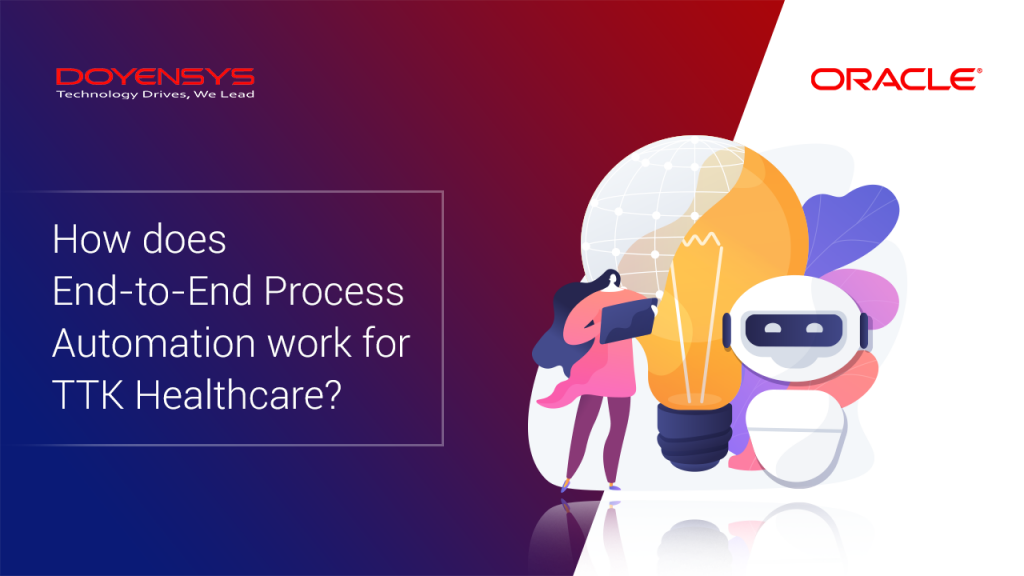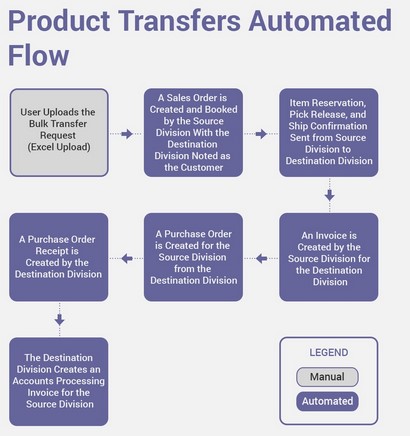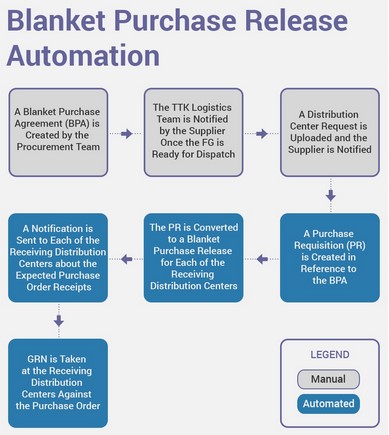Have you ever wondered about the process of how an order reaches you? It is not a simple process of click, ship, and delivery. Time-consuming and mundane processes involving multiple steps are often automated. It has significantly reduced the manual labor workforce for accomplishing various tasks.
Automation of healthcare processes can go a long way in overcoming delays and errors such as,
- Inaccurate manual inputs from different sources
- Multiple screening processes for proceeding with orders
- Lack of transparency in the workflow
- Absence of user-friendly interfaces to improve the productivity
The system is built to handle large volumes of transactions and data. Let us dive into the whole process of end-to-end process automation.
Key Objectives of the Process
This automated process will enhance the end-user productivity and satisfaction of customers by streamlining the whole process that focuses on prime objectives like,
- Internal Requisition or Internal Sales Order (IS/ISO)
- Stock Transfers
- Switching to Vendor Process
- Blanket Purchase Release
Internal Requisition (IR)
Internal Requisition is a methodology of request to transfer the material from one index to another index. This mechanism will help give you desired results by combining your demands with the different organizations’ availability. The Internal Requisition (IR) initiates a request to the supplier or organization.
Internal Sales Order (ISO)
There are some conditions where we have to get the index from another organization that requires an internal order procedure. The whole process needs an inter-organization transfer that requests the inventory from other organizations.
For this procedure, the Internal Requisition is turned into the Internal Sales Order. The ISO is used for ordering the item from another inventory by specifying the destination.
The Automated flow of IR/ISO
- Customer placing the order request
- Internal Requisition is generated at the inventory
- Inventory check for the product
- Internal sales order is generated at the destination inventory
- Order is confirmed after the item is recognized at the inventory
- Generating the Internal Sales Order receipt at the destination inventory

Stock Transfer Process:
The stock must be transferred from one inventory to another when the Order is placed. Stock transfers are used to ship items from one place to another as part of your standard inventory management.
Using an inventory transfer app, material processors can move goods to a destination at the touch of a button. The transfer of inventory using multiple locations can take locations that decrease for items and items that increase for items.
How did the Stock Transfer work between different sectors?
- The client placing the bulk Order
- The Order is placed at the manufacturing inventory
- Inventory will reserve the bulk Order
- Source inventory will confirm the Order for destination inventory
- Source inventory creates the invoice for the bulk Order
- Destination inventory will generate a placement order for source inventory
- Destination inventory will create a receipt of bulk Order
- Accounts payable invoice is generated at source inventory for Order
What is meant by Blanket Purchase Release?
Customers can use blanket Purchase orders to buy large quantities or receive special discounts. Based on the fact that a lump sum of sale order is made, it is converted into a release order.
The invoices are made for created items must be agreed on contractually and fulfilled before the end of the ordering period and are predetermined when the maximum order value is reached.
The workflow of Blanket Purchase Release Automation
- Placement of Blanket Purchase agreement by the buyer
- The distributor will notify the logistics team once the Order is ready to dispatch
- The logistic team will signify the Order and intend to the supplier
- Now, a purchase requisition for the Blanket purchase agreement is generated
- The BPA is converted into a Blanket purchase release for every purchase requisition
- Depot wise indent notifications are sent to the supplier
- Messages are sent to the receiver about the placement order receipts
- Goods receipt notes are taken at the receiving depot stating the Order is received
End to End Automation Through IR/ISO for TTK Healthcare:
TTK Healthcare is a well-established and diversified organization. It provides 30 different product services through 16 units and a workforce of more than 6000 people.
Since TTK Healthcare has an enormous user base across various sectors, Doyensys implemented IR/ISO technique for simplifying the purchasing and delivery process. Instead of transferring the product to all the places, the automation process will filter the units of actual customer sales and are transferred to the inventory.
The customer and manufacturing unit will move the stock automatically using the IR/ISO process. It will complete the flow of information for order management, shipment, inventory lifecycle, creation of internal requisitions, and internal orders received by the target organization.
The execution and creation of internal orders is a simultaneous program with purchasing responsibility. To create internal requisitions, the IR is linked to the target inventory and the location of the sub-inventory.
Sometimes there will be repetitive processes or orders which are served in the form of blanket purchases. TTK Healthcare stated that the whole automation process through oracle increased the productivity and transparency of the demands and investments.
The Overall Impact of this Process:
- This whole process increased the productivity with accurate information
- Reduced never-ending processing cycles
- The accuracy and transparency of data is increased
- End users are more satisfied with the prompt delivery
- On-time reporting of management information systems
Final Thoughts:
Multiple businesses can benefit from this process along with reduced cost and quicker turnaround. End-to-end automated processes result in better adherence to schedules and lesser errors.
We hope that this blog has provided you with valuable insights on end-to-end automation. Don’t forget to check out our other blogs as well.




